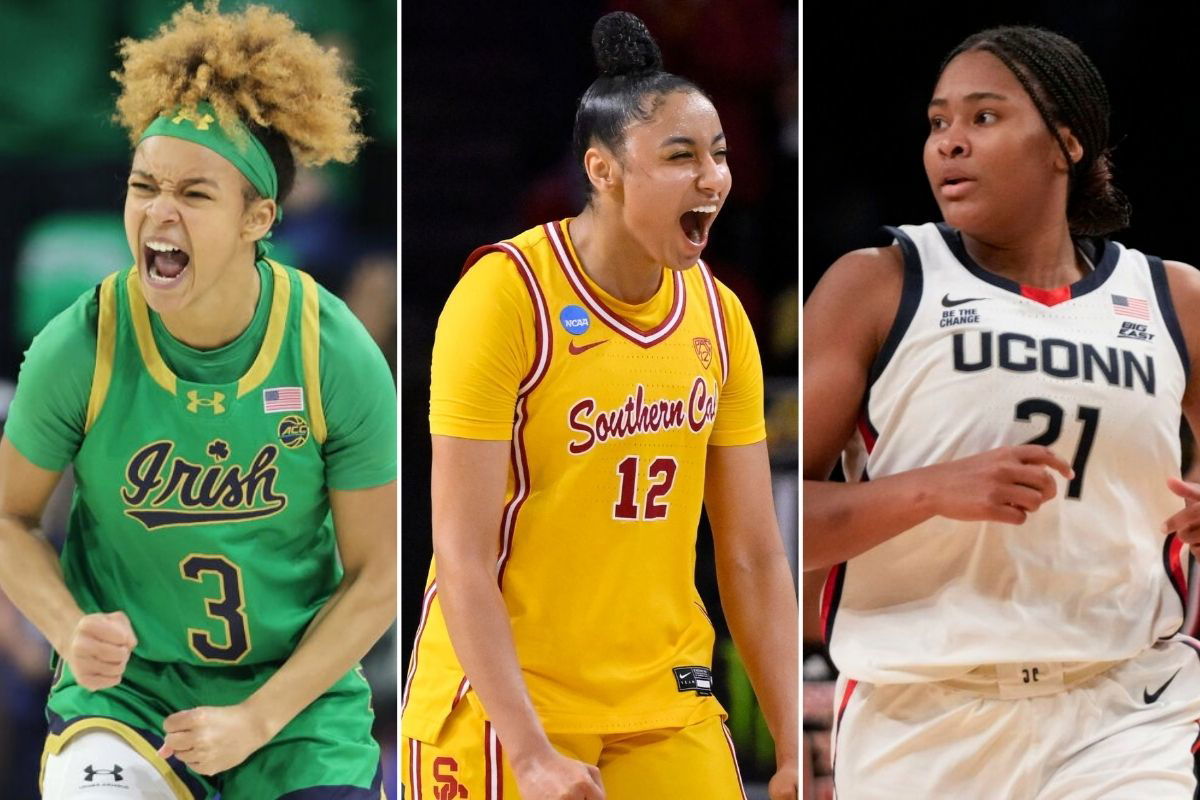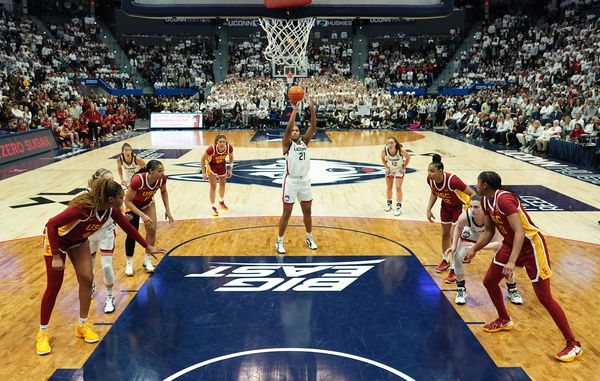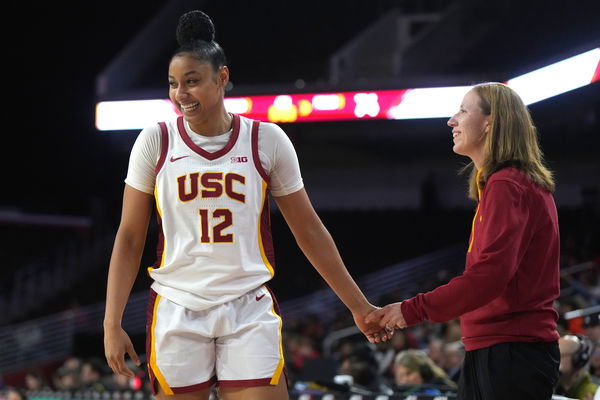
Imago
Credit: Imagn

Imago
Credit: Imagn
The WNBA is growing fast, but is it too fast? By 2030, the league plans to welcome three more franchises, adding to the already-announced expansion in Portland and Toronto. That’s five new teams in just a few years. On paper, it sounds like a dream: more cities, more fans, more opportunities. But this expansion is set to create over 60 new roster spots. And the big question is: who’s actually going to fill them?
Watch What’s Trending Now!
For years, fans and players have begged for more roster space. Every draft, top-tier talent gets cut simply because there isn’t room. But now, the pendulum may be swinging too far in the other direction. What good are 60 new jobs if we still have an outdated age rule keeping elite college talent out of the league? It might be time for the WNBA to make a choice – drop the age limit or build a G-League before this growth backfires.
ADVERTISEMENT
The current rule, explained
Right now, the WNBA has different eligibility rules for domestic and international draft prospects, and they’re pretty strict, especially for American players.
Domestic prospects:
To declare for the WNBA Draft, U.S.-based players must meet one of the following conditions:
Be turning 22 or older in the calendar year of the draft, and either have no remaining college eligibility or formally renounce it in writing at least 10 days before the draft.
Have graduated from a four-year college (or be set to graduate within three months of the draft), and again, have no eligibility left or renounce it.
Have attended a four-year college where their original class has already graduated (or will graduate within three months), with the same rules about eligibility or renouncing it.
ADVERTISEMENT
In short: unless a college player is 22 and wrapping up school, they’re sitting out the draft.

Imago
Dec 21, 2024; Hartford, Connecticut, USA; UConn Huskies forward Sarah Strong (21) shoots a free-throw in the final seconds of the game against the USC Trojans in the second half at XL Center. Mandatory Credit: David Butler II-Imagn Images
International prospects:
The rules are more flexible for international players. They can enter the draft at 20 years old, as long as they were born and reside outside the U.S., and play basketball either professionally or as amateurs abroad. However, once an international player uses NCAA eligibility, they must follow the same rules as domestic players.
ADVERTISEMENT
The case for change
The WNBA prides itself on being the toughest league to break into. That exclusivity? It’s by design. But as the league gears up to add at least 60 new roster spots over the next five years, the question is – does this expansion water down the league’s brand, or open doors that have long been shut?
ADVERTISEMENT
Sure, some might say the W’s are becoming more crowded. But more roster spots also mean more opportunity, especially for players who usually fly under the radar. New GMs may turn to international prospects or late bloomers. But we can’t ignore college underclassmen. Because every other top U.S. pro league already has a system for this. For instance NBA’s one-and-done, and in the NWSL, teams can sign players younger than 18 through the Under-18 Entry Mechanism. Each team can carry up to four under-18 players, with guardian consent and league approval.
But, you know, this isn’t the first time this topic has come to the forefront in W. The conversation around loosening the WNBA’s strict age rule actually started gaining steam way back in 2021, thanks to a pair of freshman phenoms. You already know the names.
ADVERTISEMENT
When Paige & Clark’s freshman year sparked the age rule debate
That year, freshman point guards dominated March Madness headlines. On the men’s side, Jalen Suggs hit an iconic buzzer-beater. And over in the women’s bracket, two names were everywhere – Caitlin Clark and Paige Bueckers. Clark was lighting it up from the logo for Iowa, and Bueckers made history as the first freshman ever to win both the Wooden and Naismith Awards as national player of the year.
But once the season was over, their paths split. Suggs was in the Draft conversations. Bueckers and Clark, on the other hand, had no choice but to return to campus. At the time, even WNBPA vice president Sue Bird acknowledged the flaw. “The truth is, sometimes in CBA talks when there’s so much that needs to be addressed or fixed, you don’t get to everything. And sadly, that was one thing,” she said.
In fact, when asked during USA Basketball’s minicamp that spring, multiple WNBA vets agreed: younger players deserved more flexibility, even if it wouldn’t mean mass early declarations like in the NBA. And the numbers backed it up. Adjusted for strength of schedule and NCAA-to-WNBA translation, both Bueckers and Clark had better freshman seasons than any player actually eligible for the 2021 draft.

USA Today via Reuters
Apr 5, 2024; Cleveland, OH, USA; Iowa Hawkeyes guard Caitlin Clark (22) and Connecticut Huskies guard Paige Bueckers (5) react in the second quarter in the semifinals of the Final Four of the womens 2024 NCAA Tournament at Rocket Mortgage FieldHouse. Mandatory Credit: Kirby Lee-USA TODAY Sports
So here comes this conversation about the readiness of the players…
Critics argue that lowering the age limit could expose younger players to burnout or serious injury, especially in a league as physically demanding as the WNBA. Throwing 19- or 20-year-olds into that fire too early could stunt their development or, worse, end their careers before they even begin. Veterans also point to concerns around maturity and professionalism. After all, stepping into the W at that age requires more than just talent.
But then again, not every young player is the same. Just look at Clark and Bueckers – both have shown poise, media savvy, and leadership beyond their years. And history does give us some proof of concept. Jewell Loyd (Notre Dame, 2015), Jackie Young (Notre Dame, 2019), and Satou Sabally (Oregon, 2020) all left college early under the current rules, and not only did they survive, they’ve thrived. All three are now established stars at the top of the league.
Yes, they’re exceptions but those exceptions are growing. With the college game now producing talent that’s W-ready well before age 22, maybe the real risk is waiting too long and wasting prime years on a rule that no longer fits.
Players push back on WNBA’s age limit- JuJu Watkins Speaks
If USC star JuJu Watkins were eligible for the 2025 WNBA Draft, she’d be a serious contender for the No. 1 overall pick. But she has to wait until 2027 to turn pro. When discussing the same, Watkins appeared on Good Game with Sarah Spain, alongside her USC head coach Lindsay Gottlieb, and touched on the league’s strict age rules.
“I definitely think we should have the option… I would definitely say we should have the option but I think college is a way to prepare us for the pros as well. So, I don’t know. It’s a touchy subject, but I’m for it.” She didn’t completely slam the current system after all, college is giving her the platform to shine and build her brand. But Watkins made it clear: players should at least have the choice. Surprisingly, Coach Gottlieb agreed. “If it wasn’t for the age limit being enshrined in the CBA,” she said, it “wouldn’t stand up in court.”
And Watkins isn’t alone. The players’ union has already said it supports revisiting age restrictions in the ongoing CBA negotiations, especially as expansion nears. With more teams and more roster spots, there’s more room to bring in younger talent. Moreover, until now, there wasn’t a strong push to change the system. Why? Well, rookie contracts aren’t guaranteed. Salaries are still modest. And roster spots are brutally limited. In that reality, staying in college for four years made more sense. Now, the game is changing.

Imago
Dec 10, 2024; Los Angeles, California, USA; Southern California Trojans guard JuJu Watkins (12) celebrates with head coach Lindsay Gottlieb in the fourth quarter against the Fresno State Bulldogs at Galen Center. USC defeated Fresno State 89-40. Mandatory Credit: Kirby Lee-Imagn Images
On top of that, loosening the age restriction could come with trade-offs….or work the other way around. Loosening the age restriction might actually boost the league. How?
What’s at stake: Salaries, spots, and star power?
Lowering the age rule could bring in fresh faces and new storylines, introduce marketable stars earlier, and build fan momentum sooner rather than later. But talking about money, some young players might make less in the WNBA than they currently do through college NIL deals.
And if early entry means higher roster turnover, it could mess with already tight rotations and cost mid-tier veterans their jobs. But then there’s someone like Watkins. She built massive brand recognition in just her freshman year at USC. So, in total contrast, in fact, she could elevate the league’s visibility and help boost the salary floor for everyone. The same goes for players like Sarah Strong and whoever the next phenom is.
We’ve all seen what Clark and Bueckers did after turning pro. Now, imagine if they had entered the league earlier. The impact could’ve come way sooner.
Drop or develop?
So it all comes down to if this league is really growing on the backs of its young stars, why not let more in? But still, if dropping the age rule feels too risky, there’s a second path: build a WNBA G-League or developmental system. Something like the NBA’s G-League – a space for elite young players to train, compete, get paid, and get ready before the WNBA jump.
Because even if the age restrictions are dropped, not every 19-year-old will be WNBA-ready, and even if they enter the draft, not all of them will get picked. That’s where a feeder league makes sense. It could also solve another long-standing problem: depth. With just 12 roster spots per team, too many talented players are cut before the season even starts. A G-League could offer those fringe draftees, international talents, and even veterans returning from injury a place to stay game-ready.
The timing couldn’t be better.
So it’s clear….while expanding to 16 teams with 14-player rosters might have created more room to grow gradually, the league’s decision to go all-in with 18 teams means one thing: it’s time to either drop the age rule or build a WNBA G-League. There’s no middle ground left. Or is there any?
ADVERTISEMENT
ADVERTISEMENT
ADVERTISEMENT

